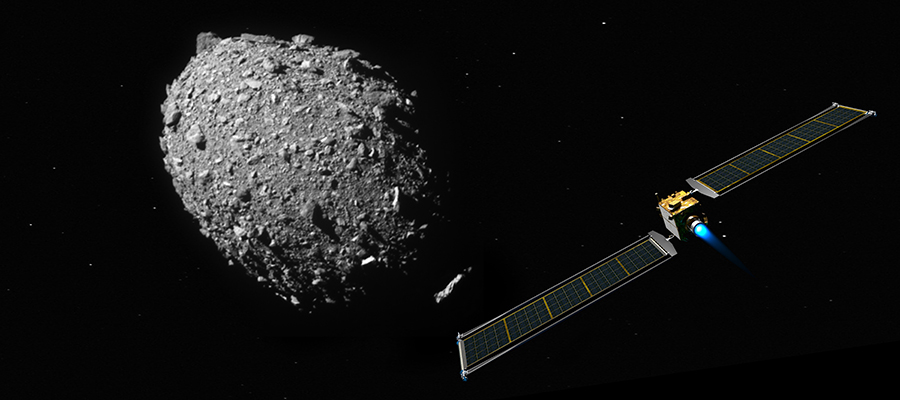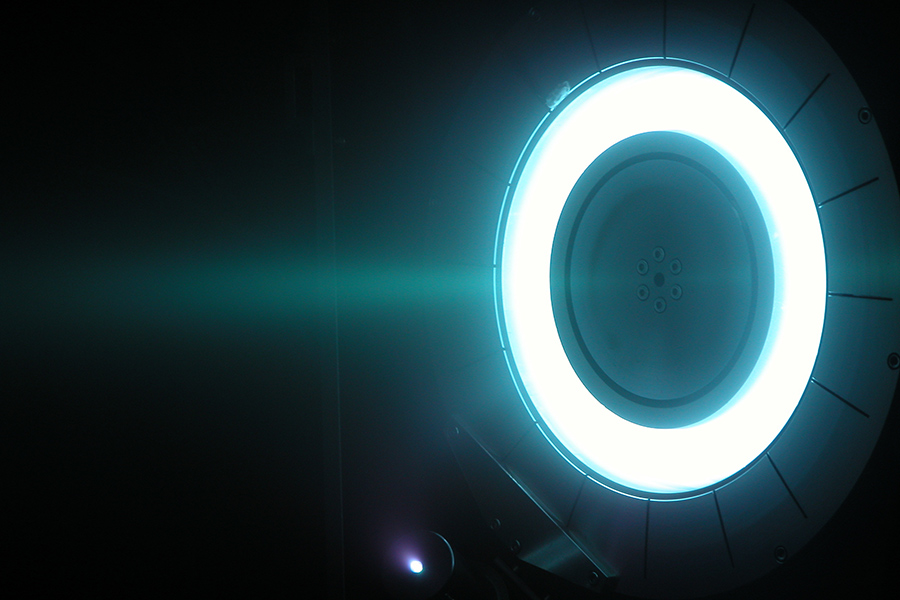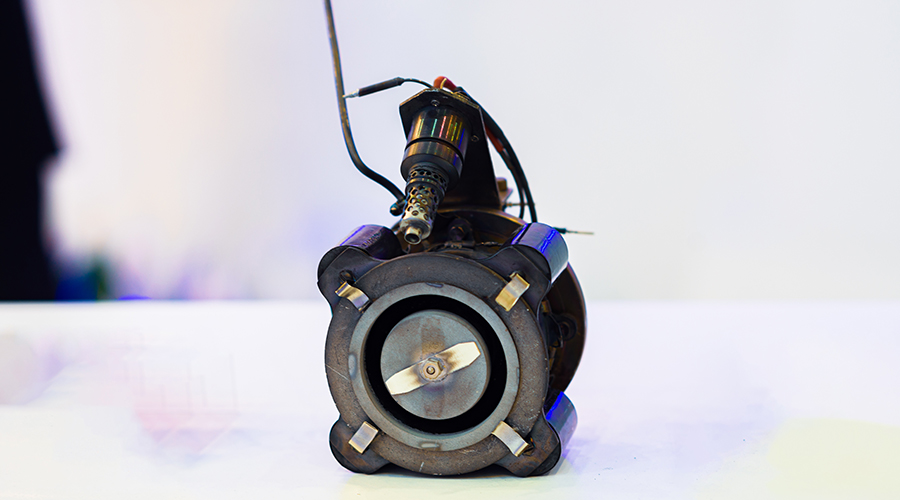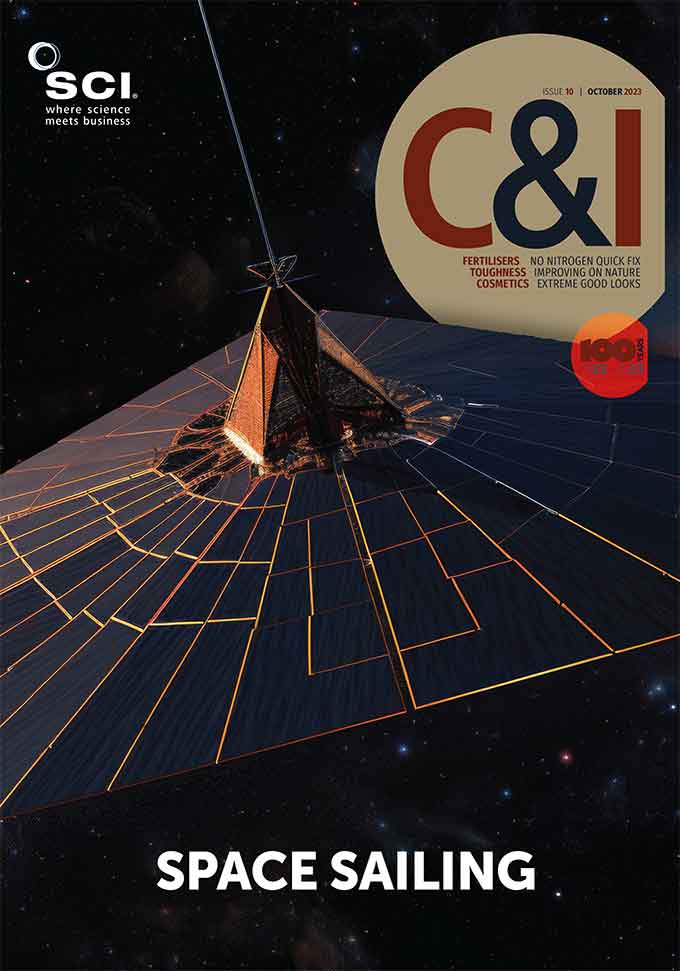FEATURE BY JON EVANS| 18 OCTOBER 2023
To reach distant planets, let alone stars, in a reasonable timescale, researchers are having to completely rethink spacecraft propulsion technologies. Jon Evans reports
On 26 September 2022, NASA’s Double Asteroid Redirection Test (DART) spacecraft ploughed into Dimorphos, a small asteroid orbiting a larger asteroid called Didymos, with sufficient force to alter its orbit. Amidst all the jubilation the asteroid had been successfully deflected – a test of whether a similar approach could alter the trajectory of an asteroid on a collision course with the Earth – one aspect of the mission was rather overlooked.
For DART was also a successful test of a brand-new ion-propulsion engine called the Evolutionary Xenon Thruster (NEXT). Following this test, NASA plans to use NEXT to send spacecraft on missions all over the solar system. And NEXT is just one of a suite of novel spacecraft propulsion technologies at various stages of development, designed to power everything from Earth-orbiting satellites to spacecraft heading towards the furthest reaches of the solar system and even beyond.

DART satellite on collision course to impacting the asteroid Dimorphos to deflect its orbit.
Until recently, spacecraft often weren’t powered at all. Instead, all their speed came from being strapped to the rockets that blasted them into space, propelled by hot jets of gas generated by a chemical reaction between a fuel and an oxidiser, often liquid hydrogen and liquid oxygen. Because space is an almost empty vacuum, once released from the rocket, the spacecraft would simply coast along at the same speed to its destination, or perhaps gain additional speed by performing a gravitational slingshot, where it skirts around a planet.
What it wouldn’t do is increase speed by firing its own onboard rockets, because storing large amounts of chemical fuel would be impractical. While such spacecraft often did possess small thrusters, these were mainly for manoeuvring, requiring minimal amounts of fuel. Increasingly, however, spacecraft are being fitted with ion-propulsion engines, which can be fired in space for extended periods of time. Not only does this allow them to reach faster speeds, but it also means they can enter into orbit around one planetary body and then fly off to another one, a feat impossible for an engineless spacecraft that simply coasts through space.

Satellite plasma thruster.
Ion-propulsion engines provide thrust by blasting streams of ions out the back of the spacecraft. These ions are generated by firing electrons from an electrode at a gas such as xenon, which triggers the release of more electrons from the xenon atoms – transforming the xenon into a plasma, a cloud of free electrons and positively charged xenon ions. The ions are then accelerated out the back of the spacecraft by either an electromagnetic field or an electrostatic field, depending on the technology being used, generating thrust. The whole process is powered by electricity from solar panels.
"Dependence on rare noble gases for spacecraft propulsion has become a real problem. We’re building iodine-based thrusters, so, in 20 years, we’d expect to see a lot of iodine-propulsion systems on satellites, and maybe even on long duration missions to Mars."
Earl Scime Professor of physics and astronomy, West Virginia University, US.
In NEXT, this process can eject ions at speeds of 40km/s, much faster than the speed at which hot gas is ejected out of a rocket (4.5km/s). But because the mass of ejected xenon ions is comparatively small, ion-propulsion engines generate much less thrust than conventional chemical rockets. For the same reason, however, ion-propulsion engines can be operated for much longer, because they use up a much smaller amount of fuel. It has been estimated that just 30kg of xenon gas could take a spacecraft to Mars. And although small, over time this constant thrust can accelerate a spacecraft to high speeds, with DART slamming into Dimorphos at 6km/s.
NASA has been using ion-propulsion engines on its spacecraft for over a decade, starting with the Dawn mission to the asteroid belt. With its ion-propulsion engine, the Dawn spacecraft was able to visit two separate bodies in the asteroid belt – the giant asteroid Vesta in 2011 and the dwarf planet Ceres in 2015. Since then, ion-propulsion engines have been successfully used on a wide range of missions, including the European Space Agency’s SMART-1 mission to the Moon and the Japanese Aerospace Exploration Agency’s (JAXA) Hayabusa sample-return missions to two near-Earth asteroids.
Following on from NASA’s NEXT, which is three times more powerful than the engines on the Dawn spacecraft, researchers are busy developing even more powerful and longer-lasting ion-propulsion engines. For example, one problem with current ion-propulsion engines is that the electrodes become damaged by the plasma, limiting the lifetime of the engines. This has led several research groups to investigate replacing the electrodes with radiofrequency (rf) antennas, and thus using radio waves, rather than electrons, to power the electron cascade that transforms the xenon gas into a plasma. But researchers have struggled to generate enough thrust with this process, only being able to convert at most around 20% of the rf power into thrust energy. Recently, however, Kazunori Takahashi from Tohoku University in Japan managed to achieve a 30% conversion efficiency, by using a magnetic field to prevent the plasma from losing energy to the interior walls of the engine (Scientific Reports, 2022, 12, 18618).
More speculative options include combining ion propulsion with an onboard nuclear reactor. Here, the electricity required to produce the plasma is derived from the heat produced by the nuclear reactor rather than solar panels. Because a nuclear reactor can generate much more energy, such an engine should be able to produce much more thrust. Furthermore, it wouldn’t suffer from the reduction in power that would affect solar panels as the spacecraft travels further from the Sun.
Xenon shortage

Stationary plasma engine. The operation of the engine is based on the acceleration of the xenon ion flow by the electric field.
Unfortunately, ion-propulsion engines are already becoming a victim of their own success. As well as powering spacecraft, they are increasingly being used on Earth-orbiting satellites, to manoeuvre them in space. Current ion-propulsion engines use xenon gas as their fuel, as xenon atoms are readily ionised, and the growing popularity of these engines means demand for xenon is starting to outstrip supply. A situation made worse by the war in Ukraine.
Xenon is extracted from the atmosphere, but this is a costly process usually done as a byproduct of steel manufacturing. ‘One of the largest distillation plants in the world for producing xenon is in Mariupol, Ukraine, which has been destroyed,’ explains Earl Scime, a professor of physics and astronomy at West Virginia University. ‘A large fraction of the world’s xenon supply has dried up and it’s in very short supply.’
One alternative to xenon is krypton, also produced in Ukraine and increasingly hard to come by. Another is argon, used in Takahashi’s rf ion-propulsion engine. But xenon, krypton and argon all need to be stored as liquids in a spacecraft, which requires complex compression equipment.
‘Dependence on rare noble gases for spacecraft propulsion has become a real problem,’ Scime says.
This is inspiring several research groups to look at iodine. A solid at room temperature, iodine helpfully sublimes directly to a gas when heated. It is also as readily ionised as xenon, but much more plentiful. Iodine could thus provide an abundant, easy-to-store solid fuel for ion-propulsion engines.
‘We’re building iodine-based thrusters,’ Scime says. ‘So, in 20 years, we’d expect to see a lot of iodine-propulsion systems on satellites, and maybe even on long-duration missions to Mars.’ To this end, in March 2023, Scime received a $748,000 grant from NASA to study iodine plasmas and ion beams with laser spectroscopy.
Meanwhile, French company ThrustMe has already tested an iodine-propulsion engine in space, fitted to a 20kg satellite launched in November 2020 (Nature, 2021, 599, 411). This engine uses a rf antenna to convert the iodine atoms into a plasma and an electrostatic field to accelerate the iodine ions out of the engine exhaust. Since this test, ThrustMe has introduced two commercial iodine-propulsion engines, for use with smaller satellites. One was used on a satellite called NorSat-TD, launched by the Norwegian Space Agency in April 2023, and the company claims to have received over 100 other orders.
For spacecraft venturing further afield, the need to carry fuel will always limit exactly how far and fast they are able to go, which is why researchers are investigating ways to do away with an onboard fuel store. Most of these technologies have not gone far beyond the drawing board, but one such technology has already made it into space. This is the solar sail. As its name suggests, a solar sail comprises a huge, thin sail designed to reflect light from the Sun. Although photons of light are mass-less, they do still possess momentum, which means they generate a small force when reflected from a surface. Added together, the force generated by countless photons hitting a surface should produce sufficient thrust to accelerate a sail and attached spacecraft, with larger sails producing greater thrust.
Plain sailing
In 2010, JAXA successfully tested a solar sail, 20m across diagonally, in space, while NASA is currently developing its Advanced Composite Solar Sail, about 25m across diagonally. To carry a spacecraft to another planetary body would require a much larger solar sail, several hundred metres across. The same approach could even potentially take a spacecraft to another star, but this would require a much more intense supply of photons than could be supplied by the Sun. In this case, researchers have suggested .
Constructing a massive solar-powered laser array in space that would produce a powerful laser beam to essentially push the solar sail and attached spacecraft to a neighbouring star.
Various related sail-based technologies have also been proposed. Rather than a solid sail, the electric solar wind sail (E-sail) comprises a circular array of thin, 20km-long tethers surrounding a central spacecraft. A small mass at the end of each tether holds them taught, while an electron gun makes them positively charged by emitting electrons. Proposed by Pekka Janhunen at the Finnish Meteorological Institute in Helsinki, the idea is that this E-sail will be blown by the solar wind, or more specifically that the positively charged protons and helium ions constantly emitted by the Sun will repel the positively charged tethers, generating thrust. To ensure this thrust produces forward motion, rather than circular, the whole array will rotate.
Because of this rotation, even a single tether would be sufficient to propel a small spacecraft in a specific direction, and so Janhunen and his colleagues recently suggested using a fleet of small spacecraft, each weighing less than 6kg and powered by a single tether, to explore the asteroid belt and then return the data to Earth (Adv. Space Research, 2021, 67, 2957).
Meanwhile, a team of Japanese researchers, led by Yuki Takao at JAXA, has proposed using a solar sail as a single massive solar panel, rather than as a sail. The idea would be to use this so-called solar power sail to supply electricity to a spacecraft with an ion-propulsion engine. The large collection area of the sail would allow this spacecraft to operate in the outer solar system, far from the Sun. Takao and his colleagues propose that a flexible, thin-film solar cell developed by the SHARP corporation, termed the Space Solar Sheet, could form the basis for such a sail (Acta Astronautica, 2021, 181, 362).
Understandably, novel propulsion technologies become more speculative the further out the spacecraft is designed to go. For example, a team led by Andrew Higgins at McGill University in Canada recently proposed wind–pellet shear sailing for taking a spacecraft to a nearby star (Acta Astronautica, 2022, 197, 408). This would involve first using the solar wind to distribute a load of tiny pellets along the route to the star; these pellets could be anything from frozen soap bubbles to graphite shells. The spacecraft would then follow the same route, initially propelled by a solar sail.
As it travelled, the spacecraft would extend an electromagnetic field in front to generate electricity from its passage through the interstellar medium and would also collect all the pellets it encountered. It would then use the electricity generated by the magnetic field to propel the collected pellets out the back at a greater speed than they were collected, thus producing thrust. Higgins and his team calculate this wind–pellet shear sailing could potentially accelerate a spacecraft to 5% the speed of light, allowing it to travel to Alpha-Centauri, our nearest star, in just 27 years.





